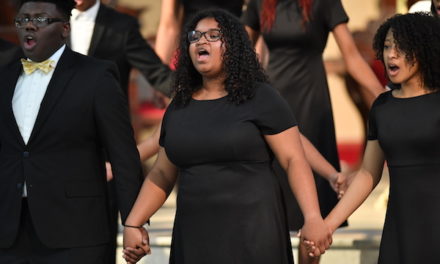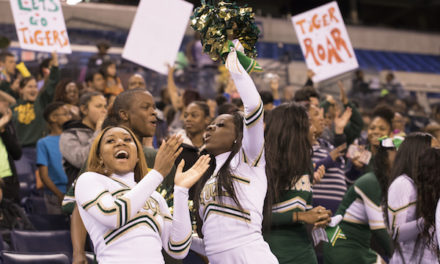
Developing student leaders is an important part of almost every music program in the nation. Many programs send their students to Leadership camps and symposiums. In many of these student leadership camps, the focus is on defining what leadership is and what it looks like to your peers; however, these student leaders may not actually be taught how to refine their own student leadership skills. In other words, much time and effort is invested in teaching students (and in some cases directors) what leadership is and how to look like leaders, but due to a lack of time, or possibly understanding, little is accomplished in developing the leader so they can actually lead.
My friend and mentor, the incomparable Dr. Tim Lautzenheiser, often says: “Leadership is not something you do. Leadership is something you are.” This is so true; however, an apple tree produces apples and a grapevine produces grapes, so a leader must produce leadership. If we are truly leaders, we will do things that a leader does!
What are some qualities most leaders possess? They are usually good communicators, they are energetic, they are influential with their peers, and they usually possess good performance skills. While all of these are great attributes, the one essential for a leader to produce the most influence comes when they can actually instruct/teach their peers. This moves the student leader beyond being just a role model – someone their peers may model themselves after – and moves them to being a real model – someone that is capable of not just showing, but is also capable of producing leadership by helping to move their peers through instruction to higher levels of excellence.
What does a REAL student leadership MODEL do?
They Motivate. They are their peers’ biggest cheerleaders.
They Observe. They work to understand better the needs of their peers and their program.
They Demonstrate. Through their actions and words, they demonstrate what their peers should strive to become. They demonstrate how to play, march, behave, respect, and ultimately how to be the best possible member of their program.
They Evaluate/Educate. They evaluate their peers’ strengths and weaknesses, and then help instruct/educate them to achieve excellence.
They Lead. In difficult times and in times of celebration, they are consistent leaders day in and day out! To quote Dr. Tim again, “They walk the talk!”
At Ooltewah, we have done this for almost my entire career. Most of our marching band staff is comprised of former students, who developed their instructional skills by being leaders in our band program. Fortunately, we have now developed our program to the point we have a Band Leadership class that meets during the school day and mentors two to three days a week in our middle school band programs. Many other programs use a student leadership Peer Teaching model as well, but maybe none as well as the great Marian Catholic Band Program and Mr. Greg Bimm. For decades, the student leaders at Marian have taught music sectionals, taught marching fundamentals, and helped to teach drill. These are student leaders who are producing leadership! Through trust from their director and being taught how to be a peer teacher, they have moved beyond defining their leadership abilities and now are refining their leadership skills. When student leaders (and directors – we must allow it) make this shift in responsibility, their impact is like a pebble being dropped in the water. The initial splash may not be very large, but the ripple effect of influence keeps going and going. The efforts of these initial student leaders BEING leaders and producing leadership inspire other students to strive for the same excellence and influence. At my school, we have not used a title for all of these student leaders. The focus of our program has been that a title is much less important than actually being a leader and producing quality leadership. While some positions may require a title, our ultimate goal should be to inspire and equip student leaders to lead.
This is why we developed the new Peer Teaching Division at the Music for All Summer Symposium. The purpose of this new track will be to provide student leaders with the tools necessary to become effective leaders and Peer Teachers in their programs. They will learn how to teach music and marching techniques from some of the best instructors in the band world, and should return to their music programs eager and ready to MODEL REAL LEADERSHIP in their programs.
The Peer Teaching Division Staff includes Mr. Jeremy Spicer – outstanding band director/music educator, owner of SASI the Leadership People, and a national adjudicator. Mr. John Howell – accomplished visual designer, instructor, and a national adjudicator of all of the marching arts. Miss Anna Rodriguez – vibrant young band director/music educator, outstanding drum major instructor, and inspiring leadership instructor. Division Chair – Mr. Joel Denton – band director/music educator, national leadership consultant, and a national adjudicator. We will also be joined each day with a special guest who is an expert on developing student musicians and inspiring them to lead. These guests will include Greg Bimm, Bobby Lambert, Gary Markham, David Starnes, and Jeff Young. All of our division staff has a focused desire to see students become outstanding and productive leaders in their music programs and in life.
The program is designed to ensure the language and verbiage being used is consistent with what is being used by directors and staffs across the nation. It is going to be a dynamic week of learning, and of BEING and DOING for all involved! I hope you and your students will join us!



